Excerpts from Jim Conrad's
Naturalist Newsletter
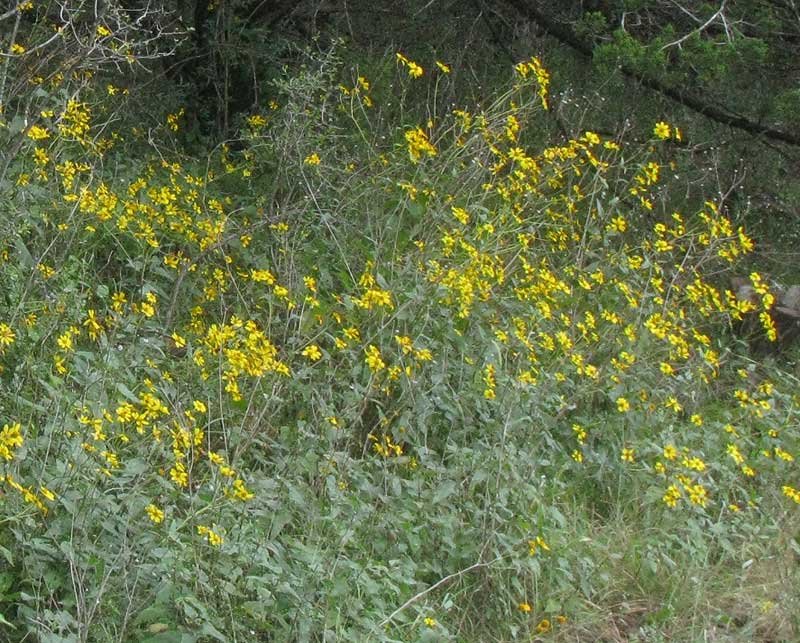
from the October 20, 2013 Newsletter issued from the Frio Canyon Nature Education Center in the valley of the Dry Frio River in northern Uvalde County, southwestern Texas, on the southern border of the Edwards Plateau; elevation ~1750m (~5750 ft); N29.62°, W99.86°; USA
SUNFLOWER GOLDENEYE
I met an old friend the other day, standing along the road, though I wasn't sure it was she until I "did the botany." That's the friend, above.
Notice that the pretty, yellow, daisy-type flower heads of this Composite or Sunflower Family member terminate long, stiff stems, or peduncles. Below, you can see that the heads' eyes are yellow, not dark as with many sunflower-type heads:
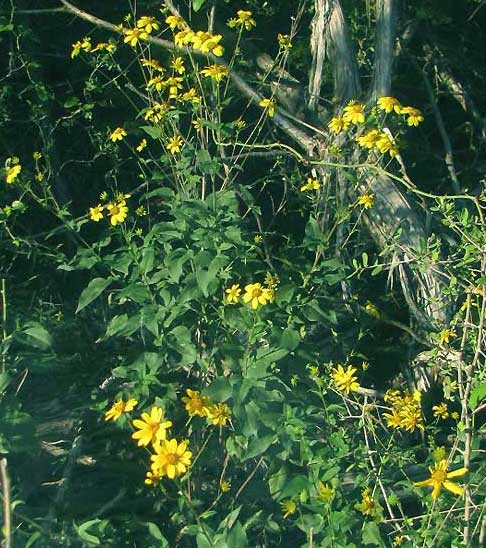
The leaves with very finely saw-toothed, or "serrulate," margins are seen below:
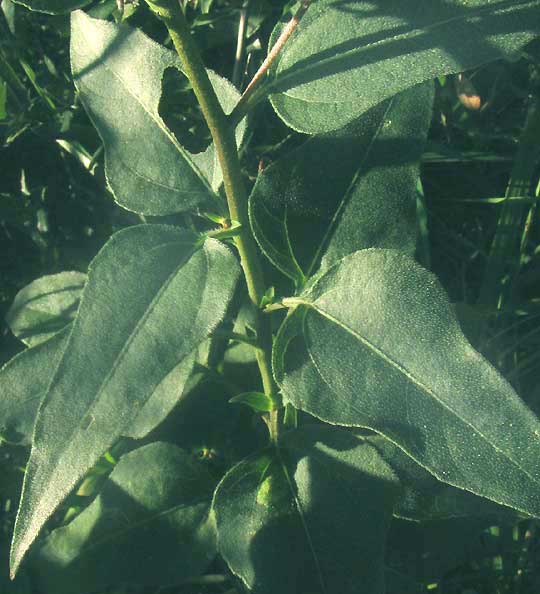
Anyone familiar with wildflowers but not knowing this species, based on what we've noted so far, might guess that this is one of many species of sunflower, genus Helianthus. Below, a general shot of the head, showing the petal-like ray flower corollas bearing notches at their tips, doesn't contradict the notion:
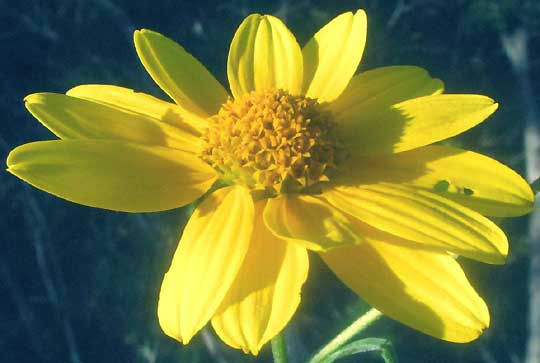
Also supportive of this being a sunflower is the fact that the cylindrical disc flowers in the head's center are fertile, but ray flowers along the head's margin bear no style arms, so do not get pollinated and do not produce viable fruits, as you can see below:
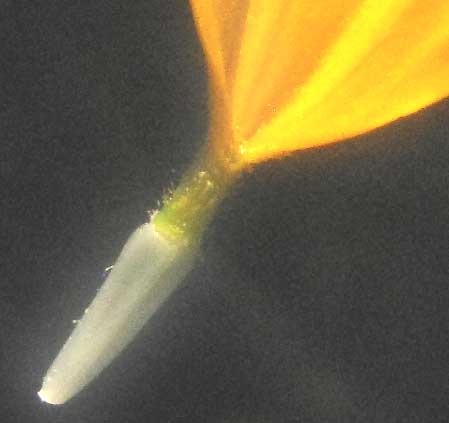
If this ray flower were fertile, two style arms somewhat in the shape of a Y would emerge from the base of the yellow corolla, at the top of the white, unformed, cypsela-type fruit.
Scales, or phyllaries, of the green involucre subtending the flower head also look like those of sunflowers, as seen below:
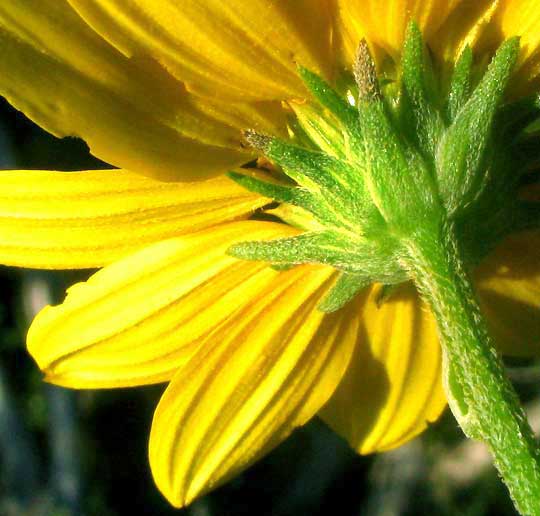
Finally, take a look at a longitudinal section of a flowering head, shown below:
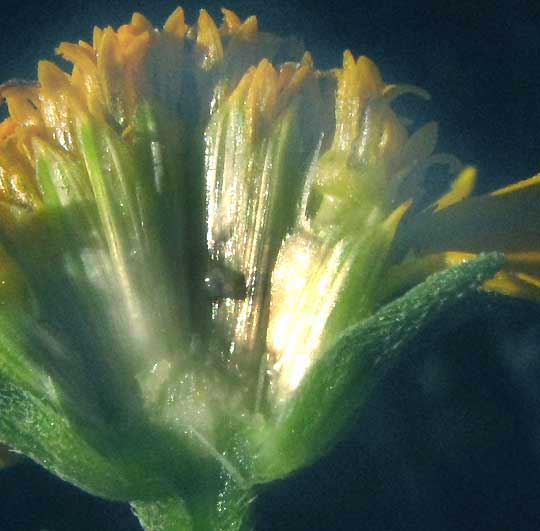
There we see that each disc flower is partly enveloped in a scoop-shaped scale, and that atop the white, developing fruit just right of the center of the picture there is a white, pointed spine, part of the fruit's pappus. That scale is like one of the needles on Spanish Needle fruits, which stick into animal fur for free rides into new territories.
Sunflower seeds are topped with sharp scales like this, but they are very fragile and fall off easily. These scales are fairly firmly attached. So that's the first indication we have that this is not a sunflower -- not a member of the genus Helianthus.
It's the Sunflower Goldeneye, VIGUIERA DENTATA, and it's an old friend because during the middle of the Yucatan's dry season untold millions of this pretty flower form yellow walls along backcountry roads, such as those shown in a picture from the Yucatan at http://www.backyardnature.net/n/12/120122vv.jpg.
The Sunflower Goldeneye occurs throughout much of Central America, the Caribbean and Mexico, and extends into the US from Arizona to central Texas.
In several Mexican states, Sunflower Goldeneye is known as Chimalacate and infusions of its above-ground parts are used for the treatment of baby rash. A 2008 study by M. Canales et al in Pharmaceutical Biology reported that a compound extracted from the plant did indeed show antifungal activity against all tested fungi.